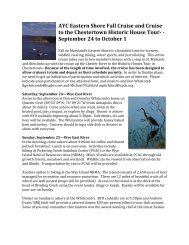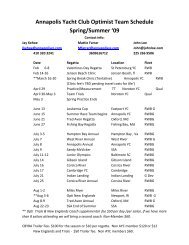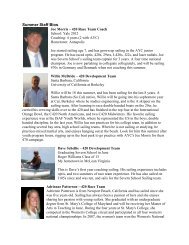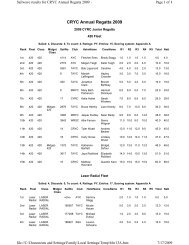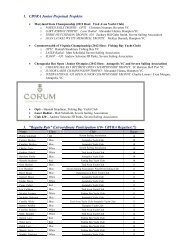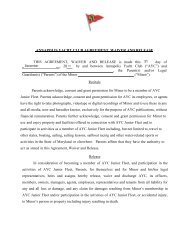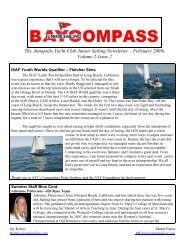You also want an ePaper? Increase the reach of your titles
YUMPU automatically turns print PDFs into web optimized ePapers that Google loves.
Update: America’s Cup 2013<br />
Kristin Leutwyler Ozelli<br />
This is not your father’s Cup Challenge…<br />
When the America’s Cup roars into San Fransisco Bay in 2013,<br />
it will look nothing like the last stateside challenge 18 years<br />
ago. Indeed, defenders ORACLE Racing, led by owner Larry<br />
Ellison and CEO Randy Coutts, are radically redefining the event—<br />
from the boats and teams in play to the venues and viewing options for<br />
spectators. We want to attract “the Facebook generation, not the Flinstones<br />
generation,” Coutts says.<br />
So far, they are on course to do so. The America’s Cup World Series began<br />
this past August in Cascais, Portugal. Tight fleet and match racing in ultrafast<br />
boats got pulses racing on the water and also on land—thanks, in part, to<br />
an unprecedented number of onboard cameras and sensors. The circuit will<br />
include two more regattas this year, up to nine in 2012, and another four in<br />
2013 before the teams decamp in San Fran for the Louis Vuitton Cup and<br />
the America’s Cup itself. Here we highlight just some of the ways in which<br />
this latest test aims to bring new blood to the oldest international sporting<br />
event in history.<br />
MULTIHULLS<br />
AC multihulls—Stars&Stripes H3, Alinghi 5, BMW ORACLE Racing<br />
90—have famously had their detractors. But old-school old salts will just<br />
have to get over it because lighter, faster multihulls are here to stay. ORACLE<br />
Racing’s design and engineering team have introduced two new classes<br />
of wing-sailed catamarans for the next two years of racing. The teams are<br />
currently honing their skills on the AC45, a scaled-down one-design version<br />
of the 72-footers they will debut in the Louis Vuitton Cup. Even on the<br />
bigger AC72s, many of the parameters—length, beam, displacement, sail<br />
area—are fixed, so boat-handling and tactical skill, as well as engineering, will<br />
be key to winning the competition.<br />
The carbon fiber hulls are less than a millimeter thick to keep the boats<br />
as light as possible. The fronts of the hulls curve like upturned knives to slice<br />
their way through the chop and back out of the water should a bow get buried.<br />
16 AYC BEACON VOLUME 3, NO. 2



